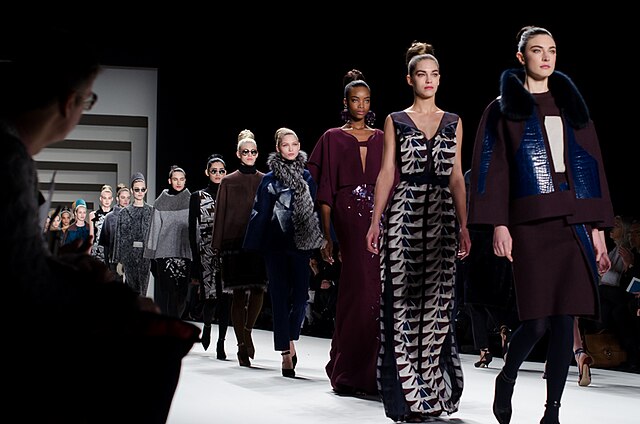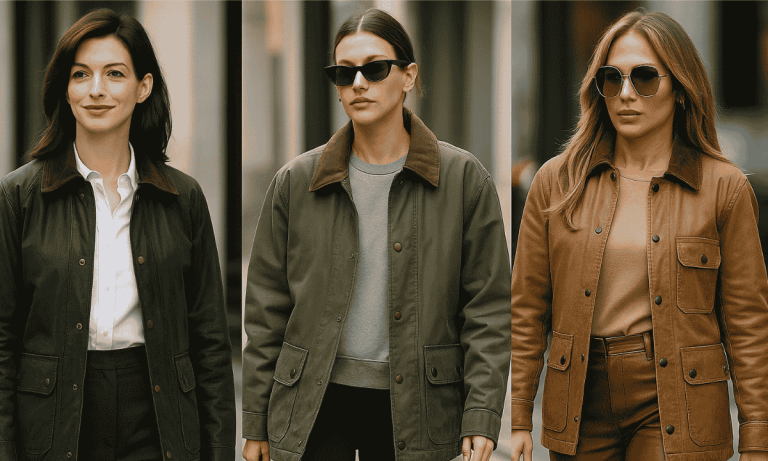There’s a hush particular to Milan in late September—marble floors buffed to a high shine, lenses poised, the first row pretending not to care. Before the lights dropped, someone near the back whispered the obvious: this was a farewell dressed as a show. Giorgio Armani, ever the measured hand, unveiled the final collection of a late designer with whom the house shared a private vocabulary—bias cuts and understatement, fabric that moved like thought. No commemorative theatrics, no mounted retrospectives. Just clothes, patient and precise, arriving like a last, handwritten note.
The room smelled faintly of starch and cedar. The soundtrack began as a heartbeat and stayed there. Out came a jacket in graphite silk, its shoulders the width of a promise, its lapels tapering to a sigh. The model walked as if not to stir the past too much, which felt about right.
A language of restraint
The collection read like an exercise in remembering how to breathe. Armani kept to the codes: jackets that graze, not grip; trousers that slip past the ankle without complaining; blouses that forgive posture and daylight in equal measure. The late designer’s fingerprints were there in the seams—an almost invisible dart across the rib; the way a collar refused to pose. It was the kind of tailoring that only looks simple from the eighth row.
Greige and winter sky, fern and midnight—colors that whisper rather than insist. Fabrics with body, not bulk: double-faced wool that held a crease the way a well-kept secret holds a room; satin that caught overhead light and turned it down, like a dimmer someone reached for without asking.
Quiet architecture, easy grace
Armani understands proportion the way an architect understands load. The evening section, if it can be called that, refused the temptations of sparkle. A column dress in ink velvet, cut on the bias, found the floor and kept going; a single bracelet, slivered like a crescent moon, did all the talking. There was one jacket that nearly made the crowd break its vow of silence—storm-grey, with a belt that tied like a sentence half-finished. When it moved, the belt didn’t. That’s a trick and a decision, and the atelier knows the difference.
Footwear stayed low, or at least honest. A suede pump with a softened almond toe; a boot that made a point of not making a point. Bags were smaller than they have been lately, a relief, with hardware that looked more like punctuation than proclamation.
A designer’s echo
Tributes in fashion can go wrong. They can get loud. This one didn’t. Armani let the late designer’s thesis speak—the conviction that clothes should be unburdened by era, that the body deserves generosity, that quiet is a choice. A coat in bone wool, unlined, was the best argument; it floated behind a model as she turned, as if it had learned to separate from time for a second and then return.
There were gestures toward the present: a trouser cut a fraction looser at the hip, a waistcoat worn over bare skin like a shrug at rules, a lapel that widened with a blink. But none of it felt like an argument with the past. This was reconciliation, not revision.
The business of grace
It’s not lost on anyone that memorials occur on calendars that must balance optimism and order. The show made commercial sense without flinching at sentiment. Buyers will have an easy time here: jackets to anchor a season, coat lengths that earn their hanger space, and dresses that won’t look dated by the time the box arrives in February. It’s not the worst definition of luxury—to spend when the spending returns comfort and, if you believe in such things, company.
Armani’s atelier looked unbothered by timelines. Seams were clean; hems, careful. The kind of workmanship that refuses to trend because it would have to admit to time. In an industry that occasionally mistakes volume for vitality, this felt like a long, slow exhale. The late designer’s name was not printed on the T-shirts outside. Good.
A last walk, then lights up
The finale arrived without fanfare, a suit in midnight wool that held the stage like a well-told story: single-breasted, two buttons, pocket flaps sewn to mind their own business. When the bow came, Armani stepped out in his quietly immaculate sweater, as always—the uniform of a man who has spent a lifetime editing himself. The room stood, of course, but it wasn’t the kind of ovation that begs for repeat. It was gratitude, measured and grounded. The applause sounded like rain on winter pavement—steady, not hysterical.
Outside, the Milan sky had shifted to that particular slate the city keeps for endings and goodbyes. People lit cigarettes they didn’t intend to finish. Someone called a car and then, after a beat, canceled it, choosing to walk. The collection will be remembered, not because it tried to be unforgettable, but because it refused to try at all. Elegance, in the Armani sense, is what remains when the noise leaves.
Maybe that’s the last lesson here: a designer passes, a house carries on, and if the work was honest, the echo is not an imitation but an afterglow. For one hour in a quiet room, surrounded by cloth and ghosts and a city that knows something about both, fashion kept its voice low and let the clothes say goodbye.







